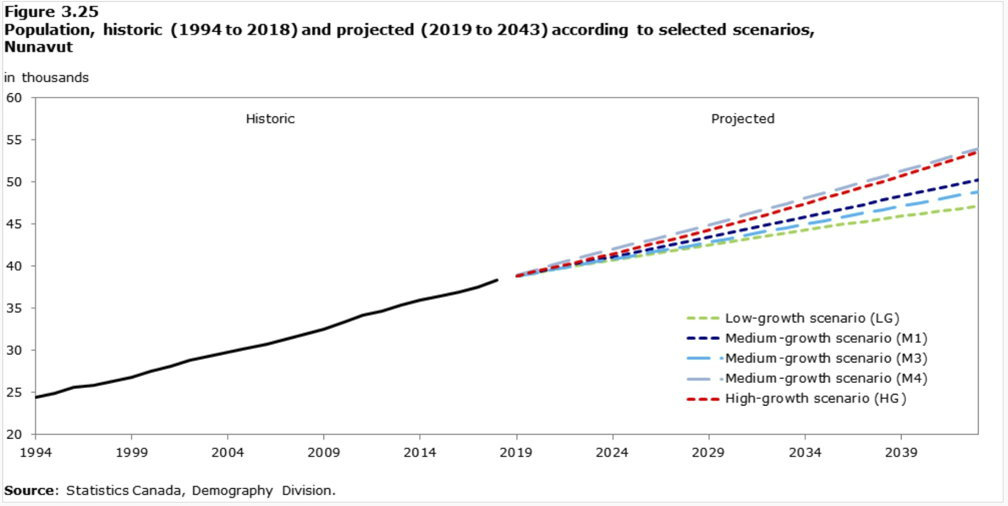Nunavut’s population could reach 54,000 by 2043, StatCan says
Unlike most of the rest of Canada, fertility — not immigration — is expected to drive growth.

Though Nunavut is expected to receive only small numbers of international immigrants over the next 25 years, the territory’s high birth rate could drive the territory’s population up to 54,000 by 2043, Statistics Canada says in a new report.
That’s also in spite of a projected future in which more people are likely to migrate out of Nunavut than migrate into the territory.
But because of Nunavut’s healthy “natural increase,” or high birth rate, the territory’s population will still grow.
Twenty-five years ago, the population of the three Nunavut regions stood at 24,400 and in 2018 was estimated at around 38,400. If current trends continue, that figure is projected to swell to around 54,000 in 25 years from 2018.
“Fertility is the key driver of population growth in Nunavut, as its population would continue to increase despite losses in migration exchanges with the rest of Canada and almost no gains from international migration,” StatCan said in its report, published Sept. 17.
That stands in contrast with most of the rest of Canada, where international immigration, not fertility, will continue to increase the country’s population.
“While the populations of many developed countries are expected to decrease, Canada’s population is projected to grow over the next 50 years, largely because of strong immigration,” StatCan said.
In 2018, the country’s population stood at 37.1 million. But by 2068, a medium growth scenario shows the country’s population could reach 55 million, StatCan said.
And in a “high growth” projection, that figure could reach 77 million.
“In all scenarios, immigration would remain the key driver of population growth over the next 50 years, as has been the case since the early 1990s,” the agency said.
And in all scenarios, Alberta and Ontario, the two fastest growing provinces, would account for more than half of Canada’s population growth.
As for the territories, Nunavut and the Northwest Territories are still projected to have the youngest populations in Canada.
Right now, Nunavut’s median age is only 26.1 years. That means half the population is younger than 26.1 years, and half the population is older. Canada’s national median age, meanwhile, is 40.8 years.
By 2043, the projected median age for Nunavut could fall to 25.6 years, StatCan said.
At the same time, however, the proportion of elders in Nunavut’s population is expected to double.
In Nunavut, the proportion of seniors aged 65 and older could reach 9.4 per cent of the population.
Compared with the rest of the country, that’s still low. Across Canada, the proportion of seniors could reach between 21 and 29 per cent of the total population of the country.
“This transition could affect Canadian society in various ways, placing additional pressure on pension and health care systems and decreasing the share of the working-age population,” StatCan said.